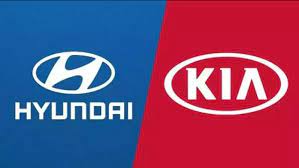
This post was most recently updated on May 1st, 2025
Misleading advertising is a significant issue that can deeply impact both consumers and the companies involved. When consumers encounter advertisements filled with false claims or deceptive promises, it not only affects their purchasing decisions but can also lead to dissatisfaction, mistrust, and potential harm. This, in turn, can have a myriad of negative effects on the brands responsible for such advertisements.
For consumers, misleading advertising can lead to wasted financial resources, disappointment, and in some cases, exposure to products or services that are harmful or ineffective. The expectation set by the advertisement is not met in reality, leading to a breakdown in trust between consumers and brands. This breach of trust is not easily mended and can deter consumers from engaging with the brand in the future, thereby affecting the brand’s reputation and its relationship with its customer base.
From the perspective of the brands, the consequences of misleading advertising can be severe. Legal repercussions are among the most immediate risks. Regulatory bodies worldwide are tasked with protecting consumers from false advertising practices, and companies found in violation can face hefty fines, legal settlements, and the mandate to retract or modify their advertising campaigns. Such legal actions not only result in financial losses but also require significant resources to manage, diverting attention away from productive business activities.
Financial penalties extend beyond legal fines and settlements. The cost associated with rectifying misleading advertising practices, such as running corrective advertising campaigns, providing refunds or compensation to consumers, and implementing internal processes to prevent future incidents, can be substantial. Furthermore, the damage to a brand’s reputation can have long-lasting financial implications. A tarnished brand image can lead to a decline in sales, difficulty in retaining and acquiring customers, and challenges in establishing partnerships or expanding to new markets.
Loss of consumer trust is perhaps the most damaging consequence of misleading advertising. Trust is a fundamental component of brand loyalty and consumer engagement. Once lost, it is challenging to regain. Consumers who feel deceived are not only likely to turn away from the brand but may also actively dissuade others from engaging with it through negative reviews and word-of-mouth. In the age of social media and online communities, the speed at which negative perceptions can spread is rapid, amplifying the impact on the brand’s image and its ability to attract and retain customers.
Here are six famous instances of misleading advertising, illustrating the wide range of tactics and consequences involved:

Tesla has faced scrutiny over its advertising practices, particularly regarding its Autopilot and Full Self-Driving (FSD) capabilities. While Tesla’s electric vehicles are at the forefront of incorporating advanced driver assistance systems (ADAS), the company’s marketing of these features has occasionally led to controversy and allegations of misleading advertising.
The popular EV giant has been criticized for potentially overstating the capabilities of its Autopilot and Full Self-Driving features. Despite the names, these systems do not make Tesla vehicles fully autonomous. Autopilot is an advanced driver assistance system that can steer, accelerate, and brake automatically within its lane, while Full Self-Driving (FSD) adds the ability to automatically change lanes, enter and exit highways, recognize stop signs and traffic lights, and park. However, both systems require the driver’s attention and intervention at all times.
In various markets, including the United States and Germany, Tesla has faced scrutiny from regulators and consumer protection agencies over its advertising of these technologies. Critics argue that the names “Autopilot” and “Full Self-Driving” suggest a level of autonomy that the cars do not currently possess, potentially misleading consumers about the capabilities and safety of the system.
Tesla’s situation highlights the challenges of advertising emerging technologies, where the excitement and potential can lead to expectations outpacing current realities. It underscores the importance of clear and accurate communication about the capabilities and limitations of advanced driver assistance systems to prevent misunderstandings and ensure consumer safety.

Balenciaga, the high-end luxury fashion brand, faced significant backlash and controversy over a holiday advertising campaign that surfaced towards the end of 2022.
The controversy centered around two separate but almost simultaneous advertising campaigns. One set of images featured children holding teddy bear bags dressed in what appeared to be bondage gear. This raised immediate concern and criticism on social media and among the public for sexualizing children or, at the very least, placing them in a context deemed highly inappropriate for their age.
Another part of the controversy involved a separate Balenciaga campaign that included a photo shoot set with office-themed props, among which appeared to be documents from a U.S. Supreme Court decision on child pornography laws. This inclusion was criticized as being in poor taste, particularly in the context of the other campaign’s imagery, and raised questions about the brand’s judgment and the messaging being conveyed.
This incident with Balenciaga’s holiday campaign is a notable example of how advertising content, beyond traditional concerns of misleading claims about products, can lead to public relations crises when the imagery or themes are perceived as offensive or inappropriate. It underscores the importance of thorough review and sensitivity in all aspects of advertising, particularly when involving children.

Like many beauty brands, Kylie Cosmetics has faced criticism over the use of Photoshop, filters, or other digital enhancements in promotional images. Critics argue that such practices can set unrealistic beauty standards and mislead consumers about the effects of the cosmetics being advertised.
She has been known to use marketing tactics that emphasize the limited availability of products to create a sense of urgency among consumers. While not inherently misleading, if not handled transparently, such tactics can lead to consumer frustration and accusations of misleading advertising if products appear to be more scarce than they actually are.

In 2012, Hyundai and Kia faced repercussions for overstating the fuel efficiency of several of their vehicle models. The companies exaggerated claims about the miles per gallon their cars could achieve, leading to a settlement with the EPA and compensation for affected car owners. This case highlighted the critical nature of accurate advertising in the automotive industry, especially regarding performance metrics like fuel efficiency.
By overstating the fuel efficiency of their vehicles, Hyundai and Kia presented a false representation of their products’ performance. Consumers relying on this information would expect to spend less on fuel for the advertised MPG than they would in reality, leading to higher operational costs than anticipated.
Misleading advertising in this context not only has financial implications for consumers but also environmental ones. Consumers making purchasing decisions based partly on the environmental benefits of higher fuel efficiency might inadvertently contribute to more emissions than they intended to, due to the inaccurate MPG figures.

Skechers faced legal action due to misleading advertising claims about its Shape Up shoes. The company advertised that wearing these shoes would help consumers lose weight and strengthen and tone their legs, buttocks, and abdominal muscles without stepping foot in a gym. In 2012, Skechers agreed to pay $40 million to settle FTC charges that the company deceived consumers with these unfounded claims. This case highlights the importance of substantiating health-related benefits in product advertising.

AT&T settled a lawsuit with the FTC in 2019 for $60 million due to misleading customers with its unlimited data plans. The company was accused of throttling or slowing down, internet speeds for customers on unlimited data plans once they reached a certain amount of data usage.
AT&T advertised their data plans as “unlimited,” which implies to consumers that they can use as much data as they want without restrictions. However, by throttling, or intentionally slowing down internet speeds after a certain amount of data was used, AT&T did not fully deliver on the promise of unrestricted data usage. This practice misled customers into believing they would have consistent service speeds regardless of the amount of data consumed.
This case highlighted the importance of clear and honest communication with consumers regarding service limitations and conditions. It also accentuated the role of regulatory bodies like the FTC in enforcing advertising standards to protect consumer interests.
In conclusion, the far-reaching implications of misleading advertising show the importance of maintaining honesty and transparency in all marketing and advertising efforts. Brands must prioritize clear and truthful communication with their consumers to build and maintain trust, ensuring long-term success and sustainability. In doing so, partnering with platforms that advocate for transparency and integrity, like MonetizeMore, can provide a solid foundation for achieving these goals.
When it comes to ad revenue optimization and expanding market reach, partnering with reputable platforms like MonetizeMore offers a promising solution. MonetizeMore stands as a beacon for publishers seeking to maximize their advertising revenue without compromising integrity. By offering access to over 50 exclusive ad networks and premium demand, MonetizeMore has already distributed over $100 million to publishers, proving its commitment to fostering trust & long-term growth. This approach not only ensures that publishers can monetize their content more efficiently but also upholds the standards of honesty and transparency in advertising, creating a win-win situation for all stakeholders involved.
Get access to premium demand now by clicking here.
AdSense strictly prohibits misleading advertising, including ads that deceive users or misrepresent products and services. Publishers violating these guidelines may face sanctions, such as ads being disabled, revenue deductions, or account suspension. Google aims to maintain a trustworthy environment for users and advertisers by enforcing these policies.
AdSense enforces its policy against misleading advertising by using automated systems and human reviewers to identify and take action on policy violations. Publishers found to be in violation may receive notifications to make corrections, and repeated offenses can lead to more severe actions, including account termination, to uphold the integrity of the advertising network.
Yes, you can receive Google policy violations for misleading ads. Google has strict advertising policies in place to ensure that ads are clear, truthful, and appropriate for all audiences. Misleading ads that deceive users, make false claims, or misrepresent products or services can lead to violations. Upon detecting such ads, Google may take actions including disapproving the ads, suspending the ad campaign, or even banning the advertiser's account to maintain a safe and trustworthy environment for users and advertisers alike.

With over ten years at the forefront of programmatic advertising, Aleesha Jacob is a renowned Ad-Tech expert, blending innovative strategies with cutting-edge technology. Her insights have reshaped programmatic advertising, leading to groundbreaking campaigns and 10X ROI increases for publishers and global brands. She believes in setting new standards in dynamic ad targeting and optimization.
10X your ad revenue with our award-winning solutions.